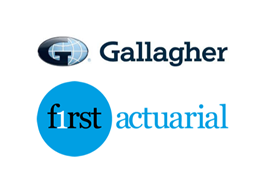Mobius’s Hugh Cutler explores how the defined contribution landscape has changed – and what pension schemes and providers must do to keep ahead of the curve.

The UK defined contribution (DC) pensions landscape is undergoing a transformation. The sector, once dominated by basic, liquid investments, is now facing demands for innovation, scale and retirement income solutions – and a growing desire from the government to contribute meaningfully to UK economic growth.
Driven by the combined forces of auto-enrolment, the decline of defined benefit (DB) schemes, pension freedoms, and the rise of master trusts, the DC market now supports more than 30 million people, if you count both active and deferred members.
Between trust-based schemes, contract-based arrangements and self-invested personal pensions, UK DC assets are approaching £1.5trn. This is no longer a marginal corner of the retirement system. It is the system.
With this growth comes a shift in expectations. This is shown through policy initiatives such as the Mansion House Accord, signed by 17 major pension providers that have expressed an intent, on a voluntary basis, to achieve a minimum 10% allocation to private markets across all main default funds in their DC schemes by 2030, with at least 5% of the total going to UK private markets.
The signatories have signalled a willingness to move beyond the constraints of short-term thinking. But meeting that ambition will require a collective effort to modernise both investment strategy and operational infrastructure.
Private markets are entering the mainstream
Three decades ago, when I began my career in pensions, diversification meant adding overseas equities to a portfolio anchored in UK blue chips and gilts. Today’s investment universe for DC schemes is far broader and more sophisticated.
Driven by the search for higher returns, inflation protection, and diversification, DC defaults are now expanding to include real assets, securitised credit, private equity and infrastructure. More recently, schemes have begun to explore exposure to venture capital, carbon removal strategies and even tokenised assets.
Much of this change has been enabled by scale. As DC pension schemes grow, they can support more complex, less liquid strategies that were previously inaccessible.
The Mansion House Accord has given this shift added momentum by offering political and regulatory support for including private markets in DC defaults. Schemes that are already implementing these strategies are showing how private assets can be introduced without breaching fee caps or undermining daily dealing requirements.
“There remains a significant gap between the leading master trusts and many contract-based or retail DC providers… Closing this gap will be essential if the benefits of diversification are to reach the broader population.”
Yet there remains a significant gap between the leading master trusts and many contract-based or retail DC providers, whose fund ranges remain dominated by traditional, highly liquid vehicles. Closing this gap will be essential if the benefits of diversification are to reach the broader population.
Decumulation is the next frontier
While much attention has focused on accumulation, a quiet revolution is also taking place in decumulation. With an estimated £200bn already in drawdown and the first generation of DC-only retirees approaching, the need for better income solutions is clear.
These retirees face an unenviable task. They must assess how long they are likely to live, estimate their retirement costs, and manage both sequencing risk and inflation exposure. Very few solutions on the market address these risks holistically. Even fewer do so at a reasonable cost.
As a result, we are beginning to see growing interest in decumulation strategies that resemble DB run-on portfolios. Unlike accumulation portfolios, which focus on growth, run-on strategies prioritise stability, income generation, longevity risk, and liability matching.
These approaches combine income-generating assets with inflation protection, using a wider range of instruments than most DC schemes currently allow. A decumulation default may eventually emerge as the natural next step for those leaving the accumulation phase.
Overcoming operational barriers

Despite the investment case for broader diversification and decumulation-ready portfolios, UK DC schemes still face unique and sometimes limiting operational requirements. Unlike DB funds, insurers or endowments, DC schemes must operate within strict constraints such as daily pricing, daily liquidity, and capped charges.
These features, while designed to protect members, can make it difficult to adopt complex or illiquid strategies. Many platforms and administrators are still configured around retail models that do not support modern portfolio construction. The result is often a narrow fund selection, higher costs, and a lack of flexibility.
Some of the UK’s biggest institutional DC schemes use scalable technology and flexible custody arrangements to help reduce costs, minimise cash drag and enable truly diversified portfolios.
What remains is for the rest of the industry to catch up. Contract-based providers in particular face significant legacy constraints but also a real opportunity to evolve. If the platform infrastructure can be modernised, it will open the door to a new generation of investment strategies that better serve both accumulation and decumulation phases.
Building better retirements through collaboration
Private markets, real assets and income-generating strategies have long been used by DB schemes and insurers. The challenge for DC is not invention but adoption.
This requires collaboration. Product providers, platforms, advisers, consultants and regulators must work together to find solutions that meet regulatory requirements while offering members better outcomes. That includes being open to shared infrastructure, pooled vehicles and standardised reporting frameworks that reduce operational friction.
The structural foundation matters too. A life fund structure can bring benefits to help meet the operational and compliance needs of DC schemes, especially within default arrangements. Life wrappers also support smoother administration, better pricing aggregation, and alignment with charge cap requirements.
Together, these features allow schemes to build portfolios that are institutional in quality but operationally practical for a DC environment.
To achieve this, the industry must be willing to move beyond legacy models. Much of the complexity in DC investing is not technical, it is cultural. When we draw on the experience of schemes that have already made this shift, we unlock an era of investments unbound, where portfolios are built not by what has always been done, but by what delivers the best member outcomes.
The Mansion House Accord has set a clear direction. The task now is to turn ambition into implementation. If we succeed, millions of savers will enter retirement with more resilience, greater flexibility, and better financial futures.
Hugh Cutler is chief commercial officer at Mobius.






















